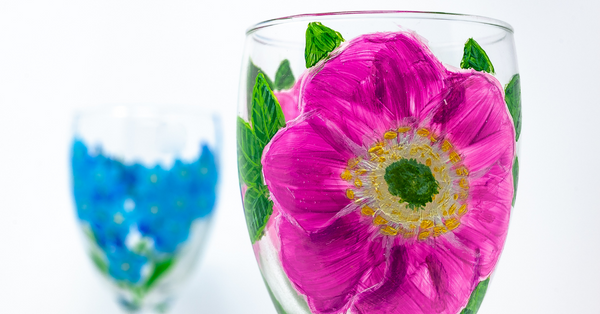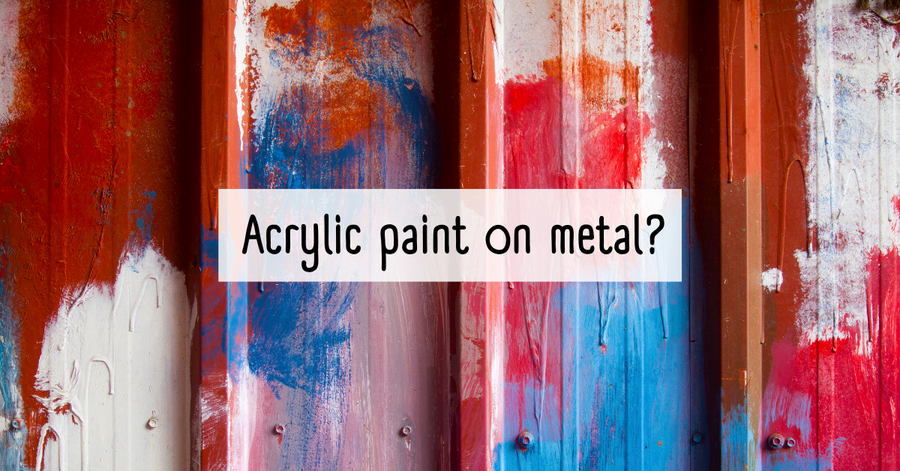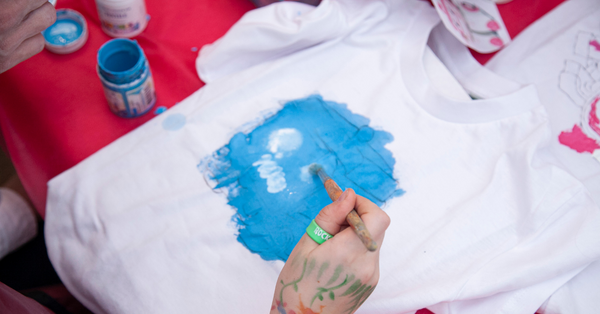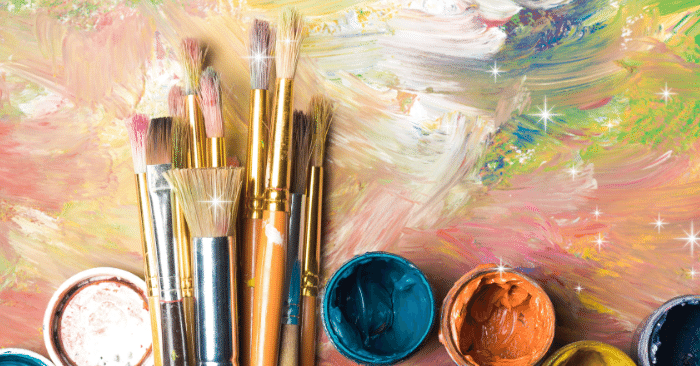
Acrylic paint continues to be one of the most affordable, versatile mediums on the market today. It can be used for a wide range of projects and leaves a bright, vibrant finish on almost any surface. But can you use acrylic paint on glass?
Yes – acrylic paint can absolutely be used to paint glass! However, there are a few additional steps you should take to prepare the glass and seal your work for a durable, long-lasting piece of art.
Follow these simple steps for best results when painting glass with acrylics.
TABLE OF CONTENTS
- Painting on Glass with Acrylics: A Step-by-Step Guide
- Tips & Tricks for Painting on Glass with Acrylics
- Frequently Asked Questions
Painting Glass with Acrylics – A Step by Step Guide
Before you get started, take some time to gather your materials and prepare your workspace. You’ll want to lay out some newspaper or plastic sheet to avoid making a mess. Then, collect the following items:
- Your glass piece
- Acrylic paint
- Paint brushes, sponges, or other tools of your choice
- Cups of water
- Paper towels or dry rags
- Soap and water or window cleaner
- Rubbing alcohol
- Microfiber cloth
- Gloves
- Acrylic glass medium
- Varnish or glass protector spray
Once your space is set and ready, you can get started.
Step 1 – Prepare the Glass
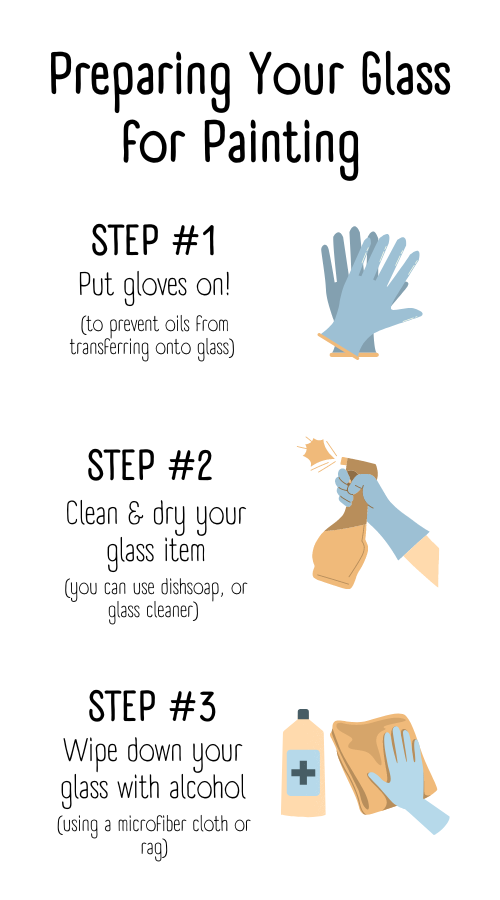
While it’s true that most acrylic paints will adhere to glass without issue, taking the time to properly prepare the glass surface will improve the longevity of your final piece and help it withstand exposure to elements.
First, put gloves on! This will prevent oils from your hand from transferring onto the clean glass surface. Then, wash the glass to be as clean and clear as possible.
Depending on the object, you can do this by washing with soap and water and allowing it to air dry, or you can spray the surface with glass cleaner and wipe thoroughly with a paper towel, being careful to avoid streaking.
Once the glass is clean and dry, you can wipe any remaining residue away with some rubbing alcohol. A microfiber cloth is best for this step, but paper towels or a dry rag will also work.
Step 2 – Prepare and Apply Your Acrylic Paint
Now that your surface is squeaky clean, you can begin the painting process.

While you don’t need to use a primer for painting glass, it might be beneficial to mix your acrylic paint with an acrylic glass medium. This will improve adhesion and allow the paint to effectively stick to even the slickest of glass surfaces. Also, some acrylic paint can be very thick, so an acrylic glass medium might help to thin the paint out enough for easier application.
If using a medium, mix your acrylic paint with the glass medium according to the instructions on the bottle. Then, get creative and paint the design of your choice on the glass using paint brushes, sponges, or whatever tools you’d like – have fun with it!
Whatever you do, be sure to apply paint in thin layers and allow them to dry before applying a second or third coat. This will help eliminate any chances of cracking.
While you paint, avoid creases and corners along the surface as paint will pool up in these areas, affecting appearance and drying times. If you must paint creases or corners, try not to use too much paint in these spots to create a clean finish.
We all make mistakes along the way, but it’s important to remember that acrylic paint dries quickly. So, if you need to modify your work, do this quickly while you work to avoid it drying and becoming water-resistant.
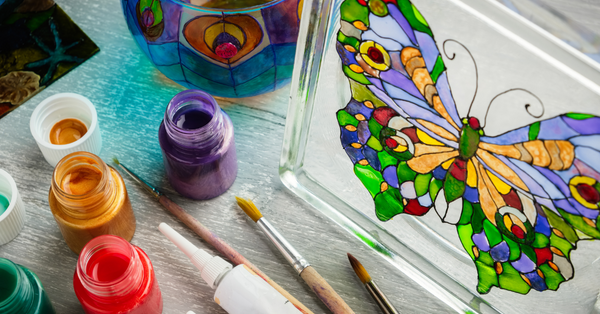
Step 3 – Seal Your Work
Once you are happy with your final piece, allow it to dry for at least 12 hours before moving on to the final step: applying a sealant.
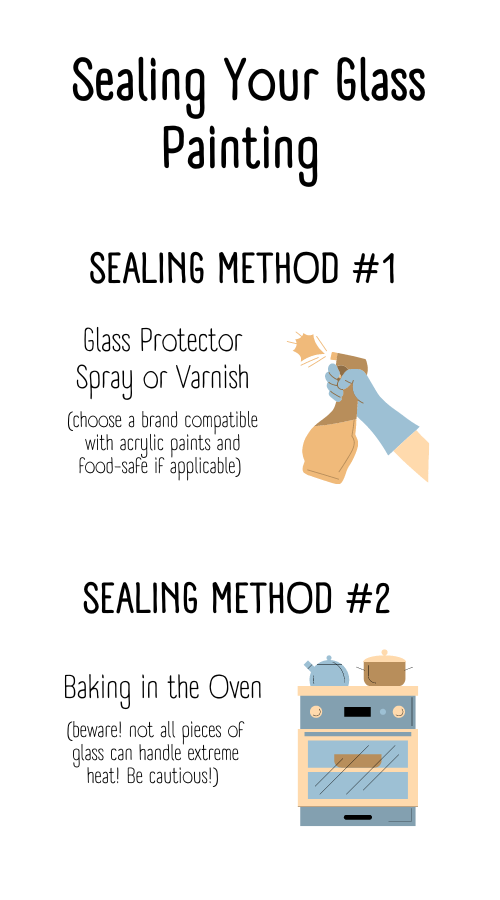
Sealing Method #1: Spray / Varnish
The easiest, most effective way to seal acrylic paint on glass surfaces is by applying a varnish or glass protector spray. Be sure to choose a brand that is compatible with acrylic paints. Also, take some time to consider what the finished product will be used for as this can impact what type of sealant you should go with. For instance, a drinking glass should be sealed with something food-safe.
The best way to apply sealant is to lightly spray thin, even coats to the entire surface. Follow the directions on your sealant as some brands only require one layer while others may suggest multiple.
Sealing Method #2: Baking
If you don’t have varnish or protector spray, you can opt for another DIY sealing method – baking. Be cautious when going this route as not all pieces of glass can handle extreme heat and some acrylic paints may not be suited for baking. Use your best judgment here.
When you confirm your piece is bakeable, place the finished product in a cold oven. Turn the oven on and set the temperature to 350 degrees. Allow the piece to bake in the oven for 30 minutes and turn the oven off. Let the glass sit in the oven as it cools which typically takes around 45 minutes. Then, keep the piece at room temperature for 24 to 72 hours.
Tips & Tricks for Using Acrylic Paint on Glass

For best results, follow these tips and tricks for painting your glass piece:
Use synthetic brushes and wash them immediately after use!
Like with any other acrylic paint project, synthetic brushes are better than natural brushes. And you can save time and money on brushes by washing them immediately after each use. Acrylic paint is water soluble, but it dries water-resistant. So, it will come off easily if cleaned directly after use, but it will be much more challenging to remove once dried and hardened.
Use food-safe paints and sealants for drinking glasses, plates, etc
If your finished product will come into contact with food at some point (i.e., wine glasses, bowls, etc.), then you’ll want to use paint and sealant that is food-safe. These products are easy to find and typically similar in cost.
Apply paint in thin, even layers
Acrylic paint can be pretty thick. If you apply it in thick layers, then it is more likely to crack and chip when it dries. Avoid this by applying thin, even layers across the glass surface.
Take care of the finished piece
Even though acrylic paint is water-resistant when dried (and even if you’ve applied a sealant), avoid soaking or scrubbing the glass surface after it’s dried. Don’t wash it in the dishwasher either. Rather, clean it gently with light amounts of soap and water to ensure a long-lasting, durable piece.
Frequently Asked Questions
Can you remove acrylic paint from glass?
Yes! You can always remove acrylic paint from glass, even if you used a sealant. You can try scrubbing with soap and water, applying rubbing alcohol or nail polish remover, or even scraping the paint from the surface of the glass. Be careful when removing paint from glass as it is fragile and can break with too much pressure.
Can I use Mod Podge over acrylic paint?
Yes! Mod Podge is all-purpose glue in liquid or gel form, and it’s made from synthetic resins. It can easily be used to seal your final glass painting, and you can choose between a glossy or matte finish. Follow the manufacturer’s instructions.
Overall…
Overall, acrylic paint is versatile and suitable for many surfaces, including glass. By taking a few extra steps, such as prepping your surface, using a glass medium, and sealing your final piece, you can ensure the durability and longevity of your painted glass.
